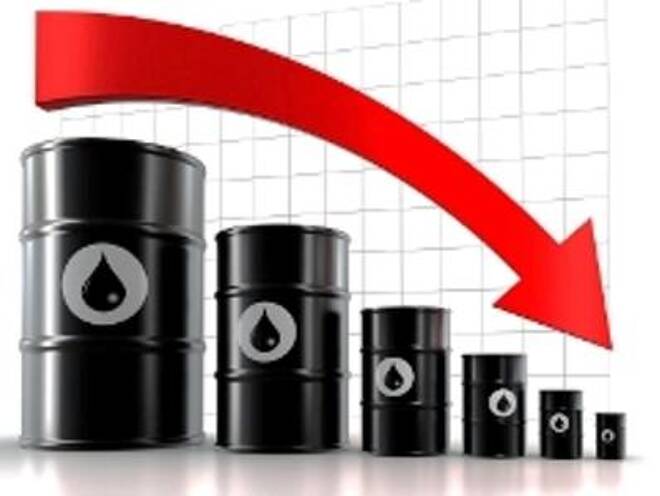Advertisement
Advertisement
Oil Prices Continue To Slide As Price War Begins
By:
Oil prices continued to fall on Monday morning surprising most traders who expected a rebound after last week’s steady declines. Crude oil is trading at
Oil prices continued to fall on Monday morning surprising most traders who expected a rebound after last week’s steady declines. Crude oil is trading at 84.65 down by $1.18 while Brent oil took a larger fall to trade at 89.36 giving up $1.22 as traders continue to turn their backs on energy products. Energy stocks have taken a beating so far in October as commodity prices continue to deteriorate. A wave of bad news has hit the commodities sector. A weakening global economy, a surplus in oil supplies and a strengthening U.S. dollar have combined to send oil prices lower in recent weeks.
Last week, the slide continued when Brent crude dropped below $90 per barrel for the first time in more than two years. Poor economic data from Germany raised fears that a renewed European recession could be on the horizon. The S&P 500 lost 2 percent on Oct. 9, and the markets have experienced some of the worst volatility so far this year. The International Monetary Fund (IMF) also revised downwards its projection for global economic growth in 2014 and 2015, warning that “global growth is still mediocre.”
China’s oil demand remains weaker than it has been in years. To a certain extent, China’s oil imports have been artificially elevated as it has diverted oil into its strategic stockpile. Oil imports could soften as stockpiles fill up. China even posted a decline in oil imports for the month of July. The current decline in oil prices is not strange. Supply has been rising steadily since the 2008 crisis. According to EIA, total production of crude oil and liquid fuels rose by 10 percent in the last five years, from 83.3 million barrels per day (bpd) in early 2009 to 91 million bpd in mid-2014. Additionally, in recent years, demand has been losing strength. The US, Europe and Japan have reduced their consumption of oil since 2008 by around 10 percent or four million bpd, due to improvements in energy efficiency and low GDP growth. Demand from emerging economies keeps rising, but growth is weaker than in previous years.
A further slump in oil prices may dampen shale drilling’s profitable run, according to a report from Goldman Sachs. In the past four weeks, global oil prices plunged eight percent. And a barrel in the U.S. is below $90, the first time in two years. On Thursday, shares of companies centered in North Dakota’s Bakken Shale dropped more than 5 percent. If prices drop any further, the Wall Street Journal reports, drilling activity would slow down drastically. Iraq has slashed its November oil prices for European and Asian buyers, following on from similar moves by rivals in the Organization of the Petroleum Exporting Countries as tumbling oil prices have left the group jockeying for market share.
Iraq’s State Oil Marketing Company cut the oil price of Basrah Light crude in November for Asian and European buyers by 65 cents to a discount of $2.50 a barrel below the Oman/Dubai benchmark for Asian customers and $4.75 below the Brent benchmark for European customers, according to official selling prices published by the company Sunday. The maneuvering by OPEC members comes a month before their next semi-annual meeting to discuss the group’s oil production and as the average price of its oil tumbled to its lowest since December 2010 last week.
About the Author
Barry Normanauthor
Advertisement
